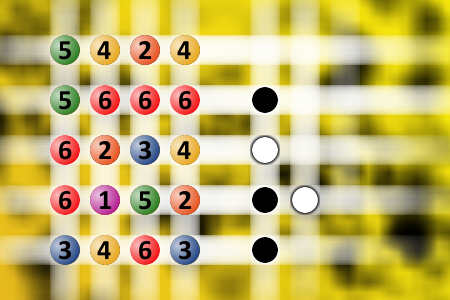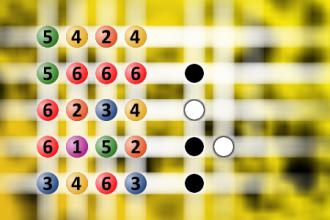Which is a winning combination of digits?
The computer chose a secret code (sequence of 4 digits from 1 to 6). Your goal is to find that code. Black circles indicate the number of hits on the right spot. White circles indicate the number of hits on the wrong spot.
Canoe
A Frenchman, an Englishman, and a New Yorker were captured by cannibals. The chief comes to them and says, "The bad news is that now we've caught you and we're going to kill you. We will put you in a pot, cook you, eat you, and then we're going to use your skins to build a canoe. The good news is that you can choose how to die."
The Frenchman says, "I take ze sword."
The chief gives him a sword, the Frenchman says, "Vive la France!" and stabs himself to death.
The Englishman says, "a pistol for me please." The chief gives him a pistol, the Englishman points it at his head, says, "God save the queen!" and blows his brains out.
The New Yorker says, "Gimme a fork." The chief is puzzled, but he shrugs and gives him a fork. The New Yorker takes the fork and starts jabbing himself all over-his stomach, sides, and his chest. There is blood gushing out all over.
The chief is appalled and asks, "My God, what are you doing?"
And the New Yorker responds, "So much for your canoe, you stupid jerk!"

